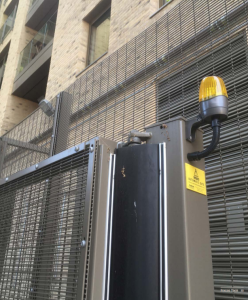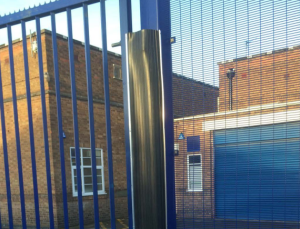To reiterate: risk assessment is key to rule out any potential safety hazards resulting from an inherently poor design and construction of a gate. Eliminating the safety and construction risks from the gate design in the first instance will make for not only a safer system, that will require less additional safety features fitted on the gate when it is finally commissioned, it will ultimately result in a more cost effective and efficient service for the end customer.
An important consideration to ensure a safe installation with swing gates is the need to eliminate any gaps between the post and the hang stile of the gate leaf if there is a reducing gap when the gate is in operation. Gate Safe is aware of numerous incidents where crushing injuries have occurred as a result of a finger or limb becoming trapped as a gate closes or opens.
There are two ways to eliminate this risk.
The best way is to design out the risk of impact and crushing from the beginning, by ensuring that the gap does not reduce when the gate opens (or closes) by virtue of the way the leaves are hung on the posts and the sections used for the leaf and the post. If this cannot be done – for example on a bespoke gate due to the local conditions of the site – there is another option in the guise of finger trap guards.
These can easily be fitted onto any swing gate to prevent fingers, hands or arms from accessing the reducing gap at the gate post which ultimately mitigates the risk from the design.


